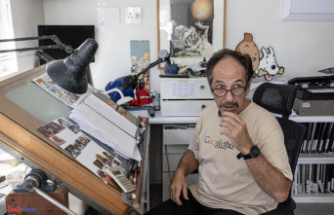The emissions generated by vehicles, aircraft, ships and transport systems, are responsible for a high percentage of the emissions of toxic gases, particle, NOx, and CO2 , responsible for this last of the so-called "greenhouse effect". The CO2 is the main responsible for global warming so that the rhythm of estimated emissions in the year 2100 the average temperature of the planet could rise by about 5 degrees celsius , with disastrous consequences for the environment and humanity.
The Paris agreement on climate scored a goal: to put the limit the global warming below two degrees. On the other hand, the world is undergoing a rapid process of urbanisation: by 2050, cities will bring the 50% of the world population and they will produce 85% of emissions harmful to the health of the people. And to this we must add that, if the volume of production of cars continues to grow at the current pace, in 2050, it will produce 120 million cars, and there will be 2,000 million cars circulating on the planet.
mobility is a key factor in these phenomena . Get a free mobility of CO2 emissions as well as an efficient transition, is the great goal of the automotive industry. But to do so, the automobile manufacturers, component manufacturers and the energy sector are facing many challenges intertwined.
The electrification is the path chosen towards a mobility free of emissions, but missing many years until this technology cope the market. According to the estimates of Schaeffler, in 2030, 30% of the automobile move with combustion engine , a 40% will be hybrids and a 30% purely electric. If we take into account the mobile world in the year 2050, 9% of the cars mounted an internal combustion engine, the 25% will be hybrids, and 66%, electric or hydrogen. In this way, to meet the objectives of Paris, there are to continue working in combustion engines, hybridization and electrification.
consumption and CO2 emissions of the combustion engines have a lot of room for improvement. Only with the technologies that Schaeffler already offers today (train valves, fully variable, hybridization 48V, module, thermal management, reduction of internal friction...) emissions can be reduced up to 15%. Schaeffler also supports the car manufacturers on their road to electric mobility with its broad portfolio of available technologies of electrification. "We have products for all levels of electrification , since the hybridization-a mild hybrid vehicles, full and plug-in hybrids, going by electric motors and high-performance pure electric vehicles", said Matthias Zink, CEO of Schaeffler Automotive OEM in the last edition of the IAA.
electric CarsAnother challenge is getting consumers to leave their mark for electric cars, something that currently does not happen: in the first half of 2019 have been sold around 39 million cars worldwide, of which only 1.9% of the total were electric (765.000 and with a great prominence of China, with 430.700 units)*. To do this, there is to get out of a vicious circle: low demand does not allow generating economies of scale to reduce the prices of batteries, that account for 45% of the cost of an electric car . For an electric car can compete with the average price of a conventional car, us $ 28,000 at the global level, the cost of the batteries has to fall to 67% in the next decade. And the small park also encouraged to build the necessary infrastructure to recharge electric.
Mathias Zink, CEO of the Division Automotive OEM Schaeffler , considers that it must reach a meeting point between the different interests present in the transformation of mobility. “Are the energy sector, the automobile, the consumers... but so far it has not been possible to create a common front. In Schaeffler we are working at all levels with this idea, from the major associations, to the political forums more influential. It is a scenario that is holistic, in that they must be considered all the factors and visions. This is not only to hybridize and electrify. We need to look beyond, taking into account the future and to all that can play an important role in it”.
clean EnergyThe main strength of Schaeffler is its strong diversification, so that is present in all the links of the energy chain, from power generation to its use in vehicles. The mobility of tomorrow can only be sustainable when it considers the whole chain. Move the emissions from one point of the chain to another –from the cars to the power stations - has no impact on the overall balance of CO2.
And the target generate the 100 for 100 of the electric energy without emitting any CO2 are not going to get in the next three decades. According to the data of IEA, in 2017 took place in all the world, to 25,000 TWh of electricity, more than 75% of conventional sources. The forecasts for the year 2050 is that they will double that production up to the 50,000 TWh, and only a third of that figure will come from renewable energies.
The cars stored that energy in batteries, which also pose challenges. The construction of the battery current technology depends on the supply of lithium and cobalt. According to the estimates of production of electric cars and hybrids, and other devices that employ batteries, the present reserves of cobalt will be depleted in the year 2039; and the lithium in the year 2047.
Klaus Rosenfeld, ceo of Schaeffler AG points to the technologies of electricity storage to balance the fluctuating availability of renewable energy sources, and the growing importance of alternatives such as hydrogen. In his initial work of development of components for hydrogen fuel cells, Schaeffler is taking advantage of their traditional experience in technology, and conformation of materials and surface technology.
Date Of Update: 18 September 2019, 05:01











